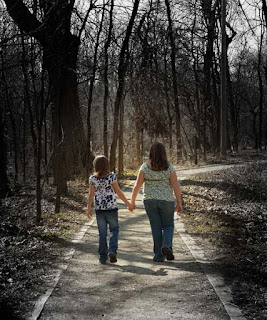
So you took a lot of pictures at a party, an outing, or on a vacation – Now what? You need to set up a system that you follow each time so you can quickly and efficiently save the images, edit them, and have them ready to print or send to friends and family for their enjoyment. Professional Photographers refer to this as digital workflow. What follows is a step by step system that you can use as is, or adapt to fit your style and needs.
Step 1: On your computer in the folder where you store your images (pictures), create a folder with a name that relates to the images to make them easy to find. Name it for a specific event or date. Such as Party-081909, or Seashore Vacation 2009, or just the date 091909, whichever works best for you? In that folder create a subfolder and name it “all files.” Now copy the image files from your camera or memory card into the “all files” folder. Make sure you copy the files. Do not move the files, just copy the files. Once you have made sure the files have been copied successfully, you can erase the images files in the camera, or reformat the memory card.
Step 1: On your computer in the folder where you store your images (pictures), create a folder with a name that relates to the images to make them easy to find. Name it for a specific event or date. Such as Party-081909, or Seashore Vacation 2009, or just the date 091909, whichever works best for you? In that folder create a subfolder and name it “all files.” Now copy the image files from your camera or memory card into the “all files” folder. Make sure you copy the files. Do not move the files, just copy the files. Once you have made sure the files have been copied successfully, you can erase the images files in the camera, or reformat the memory card.
** Now would be a good time to backup the file to a CD or DVD, so you have all the images two
places – on the hard drive and on a CD.
Step 2: Create a subfolder and name it edit. Copy the files in the All Files folder to the edit folder. Do not move the files, copy the files. Now do a quick edit of the images in the edit folder. There was probably image editing software that came with your camera, or use one of the many free ones available on the internet like the one from Google: Picasa. I use ACDsee. In the quick edit delete all the duplicate and bad images. Now go through the images and rotate the ones that need to be vertical, so you can view them properly. Some edit programs allow you to do a batch rotate. You can select all the images you want rotated, and they will be rotated all at the same time. Now do a serious edit and delete the ones you don’t want to share or print. Do not worry about deleting them. If you change your mind later you can always get them back from the all files folder.
** You now have all your best images in one folder.
Step 3: Tweak the images to make them the best image possible. The fact is all digital images need to be improved with a little tweaking. It is rare that an image is perfect straight out of the camera. What is tweaking? Tweaking is adjusting the levels, color, contrast, saturation, removing a color cast, cropping, and whatever else you need to do to improve the image. Some photographers create a new folder for the tweaked images. I just use the edit folder, tweak the images there, and no matter what I do with the images, the will always look the same. If you’re not happy with the end result of an image, you can always get the original image from the all files folder and start over.
I know a lot of you are thinking that when you were photographing with film you didn’t have to go through all this tweaking and stuff. You didn’t, the photo lab did it for you. If you have been getting digital prints back for your photo lab that has look a little dull, lifeless, or not cropped just right, try tweaking the same image and having it printed again and see if it isn’t better. A little tweaking can take an average image and make it look outstanding. If you are cropping the image, size it for the largest size you will need. If it’s cropped for an 8x10, you can make smaller prints with no problems. If you crop it for 4x6 you are not going to get good results as an 8x10. Crop for the largest size anticipated.
** Save the edit file to a CD or DVD. On the same disc as the all files would be ideal.
Now you are ready to print and share your images. Don’t let them just sit there on your computer.
If there is anything special you want me to cover, or anything you want me to cover in more detail please let me know.
No comments:
Post a Comment